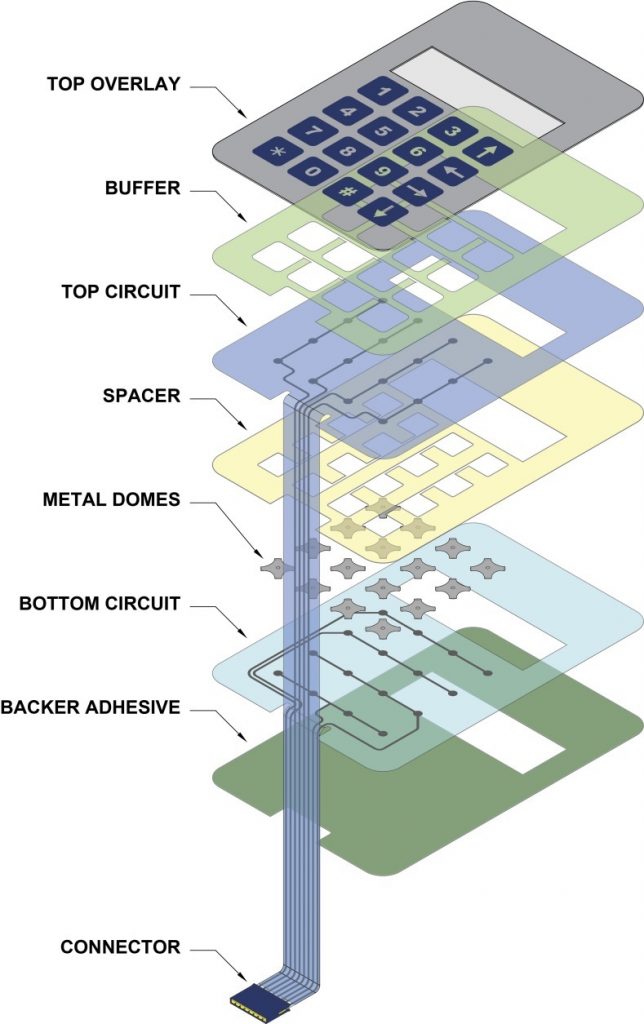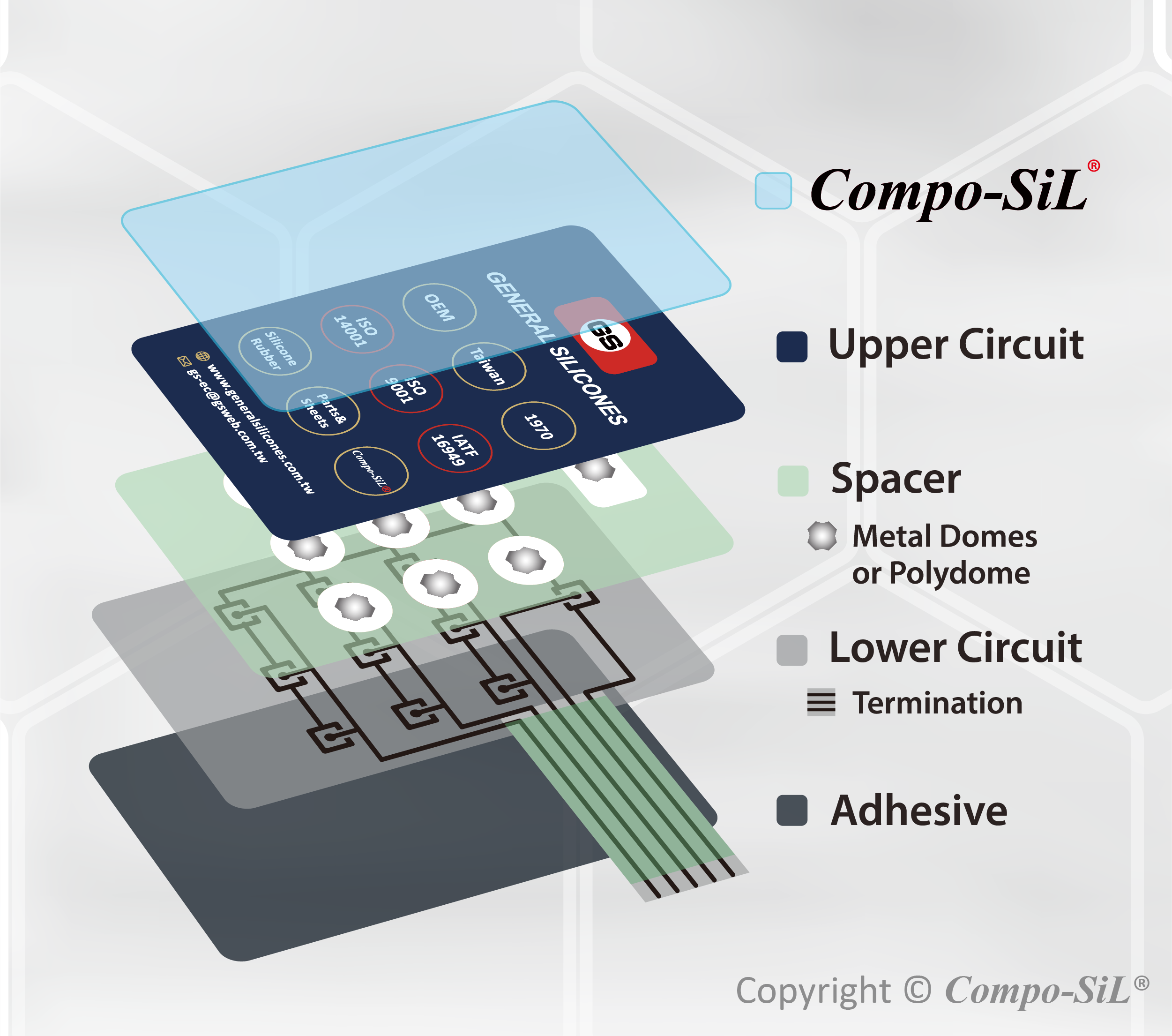The future of membrane switch in connected automotive systems
The Production Process Behind Membrane Change: What You Need to Know
The production process behind membrane switches over combines cautious layout, product choice, and quality assurance. It begins with understanding the intricacies of membrane button design and advances via numerous phases, including product options and printing strategies. Each stage plays a vital duty in ensuring capability and durability. The intricacies of layer building and construction and the strenuous testing requirements may reveal insights that are not instantly obvious. What lies past these foundational elements?
Comprehending Membrane Layer Change Layout
Membrane buttons may show up basic at very first glimpse, their design includes intricate considerations that assure functionality and longevity. The layout procedure begins with a thorough understanding of user demands, including the interface's desired application and ecological variables. Functional designs is a vital element, as the layout needs to help with simplicity of usage while making certain that responsive comments meets customer expectations.Moreover, the layering of elements, such as visuals overlays, glue layers, and conductive traces, must be precisely engineered. membrane switch. This split arrangement not only affects the switch's responsiveness but likewise affects its long life. Interest is offered to the securing methods utilized to shield versus dampness and dust, which could jeopardize performance. Furthermore, layout considerations include visual appeals, where shade plans and aesthetic clarity improve individual experience. Ultimately, the design of membrane changes equilibriums functionality, customer experience, and durability, making sure that they satisfy the demands of numerous applications successfully
Materials Utilized in Membrane Change Manufacturing
When selecting materials for membrane layer switch manufacturing, it is necessary to contemplate both efficiency and toughness. The key materials include polyester and polycarbonate films, which offer adaptability and toughness. These movies are often covered with glue to ensure proper bonding to substrates. Conductive inks, usually made up of silver or carbon, are crucial for producing electrical connections within the button, permitting trusted operation.Additionally, a safety layer, such as a difficult coat, is regularly related to improve scratch resistance and longevity. The option of backing product, such as acrylic or foam, can substantially influence the button's tactile feeling and total customer experience. Numerous ecological aspects, including temperature level and humidity, should lead product option to guarantee peak efficiency in details applications. Ultimately, the appropriate combination of materials adds to the membrane layer switch's capability and lifespan, making notified choices essential for producers.
The Printing Process: Creating Video and Text
The printing procedure in membrane layer switch manufacturing plays a substantial role in producing top quality graphics and text. Various graphic style strategies are employed to guarantee visual appeal and performance, while careful ink option methods are vital for durability and performance. Understanding these components is essential for attaining best cause membrane layer button layout.
Graphic Design Techniques
Graphic layout strategies play a crucial duty in the printing process of membrane switches, as they specify exactly how graphics and message will eventually appear on the end product. Reliable graphic layout entails the tactical usage of typefaces, formats, and shades to enhance readability and aesthetic allure. Developers often utilize vector graphics for scalability, ensuring that pictures stay sharp at various dimensions. In addition, interest to contrast and placement is important, as it influences user interaction and visual top quality. The incorporation of branding elements, such as logo designs, need to be handled with like maintain brand honesty. Generally, thoughtful graphic design techniques add significantly to the performance and attractiveness of membrane layer buttons, affecting customer experience and product efficiency.
Ink Option Techniques
Choosing the ideal ink is vital for attaining the wanted visual top quality and sturdiness in membrane layer button manufacturing. Numerous ink types are made use of, consisting of solvent-based, water-based, and UV-curable inks. Each kind provides distinct characteristics, such as versatility, adhesion, and resistance to ecological elements. Solvent-based inks are typically preferred for their longevity and vivid shades, while water-based inks are much more ecologically friendly but might have limitations in bond. UV-curable inks offer quick treating and durable efficiency. In addition, color matching techniques guarantee that the selected inks align with layout specs. Ultimately, the choice of ink have to consider elements such as application method, substratum compatibility, and end-use needs to achieve exceptional results in membrane button graphics and text.
Layer Construction and Assembly

Product Selection Process
A mindful choice of products is essential in the manufacturing process of membrane layer buttons, as it straight affects functionality and sturdiness. The primary products utilized include polyester, polycarbonate, and various conductive inks. Polyester is often preferred for its exceptional resistance to chemicals and abrasion, making it appropriate for severe settings. Polycarbonate, on the various other hand, gives exceptional quality and impact resistance, which is advantageous for applications needing exposure and effectiveness. Conductive inks, generally composed of silver or carbon, are essential for creating reputable electric paths. Furthermore, the option of sticky materials affects the general honesty of the switch - membrane switch. Assessing elements such as environmental exposure, tactile feedback, and visual requirements guides producers in choosing the finest materials for their particular applications
Layer Attachment Methods
Sticking layers in membrane layer switch construction is an essential process that assures functionality and durability. Various adhesion methods are employed to secure optimal bonding between layers, which usually consist of making use of adhesives, warmth, and pressure. Pressure-sensitive adhesives (PSAs) are typically utilized for their simplicity of application and prompt bonding capacities. In addition, thermal bonding methods can be used, where heat is used to activate glue residential properties, securing a strong bond. The option of adhesion technique greatly depends on the products entailed and the specific application needs of the membrane layer switch. Appropriate alignment and consistent application of adhesives are important to prevent flaws, protecting the switch runs effectively throughout its designated life-span.
High Quality Control Steps
Guaranteeing top quality control during the layer building and setting up of membrane layer buttons is vital for preserving performance and reliability. This process normally involves numerous vital steps, consisting of extensive examinations at each stage of manufacturing. Makers make use of sophisticated screening techniques, such as peel examinations and bond analyses, to verify the honesty of layer bonds. Additionally, aesthetic examinations are conducted to recognize any problems in printing or material inconsistencies. Ecological problems, such as temperature and moisture, are carefully kept an eye on to ensure perfect curing and adhesion. Moreover, regular calibration of equipment assists maintain accurate manufacturing criteria. By executing these quality assurance measures, producers can substantially decrease the danger of product failure, guaranteeing that the final membrane layer changes fulfill the required specifications and client expectations.
Evaluating and Top Quality Control Measures

Advancements in Membrane Switch Modern Technology
As improvements in technology proceed to go right here advance, membrane switches are taking advantage of ingenious developments that enhance their performance and individual experience. One notable innovation is the assimilation of capacitive touch innovation, which allows for even more responsive and instinctive interface. This shift not just improves aesthetic appeals yet likewise minimizes mechanical deterioration, prolonging the life expectancy of the switches.Additionally, improvements in visuals overlay materials have led to boosted longevity and resistance to ecological aspects such as wetness and UV light. These materials now offer enhanced quality and illumination, more elevating the aesthetic appeal.Furthermore, the Read More Here consolidation of wise modern technology is transforming membrane switches over right into interactive control board, enabling connectivity with IoT gadgets. This connectivity fosters a smooth customer experience, paving the means for applications in different markets, from healthcare to customer electronics. Jointly, these advancements position membrane layer switches over as critical parts in contemporary tool style.
Often Asked Questions
How much time Does the Membrane Layer Change Manufacturing Process Take?
The period of the membrane switch production process can differ substantially. Aspects such as intricacy, materials utilized, and manufacturing volume influence timelines, with regular production varying from a couple of days to a number of weeks for conclusion.
What Are the Common Applications for Membrane Buttons?
Membrane layer switches are frequently utilized in different sectors, including automobile controls, house home appliances, clinical tools, and consumer electronics (membrane switch). Their flexibility and resilience make them suitable for applications calling for easy to use user interfaces and reliable performance in diverse environments
Can Membrane Switches Be Customized for Particular Demands?

What Is the Life-span of a Regular Membrane Change?
The life expectancy of a typical membrane layer button varies, but normally, it varies from 1 to 5 million cycles. Variables such as use, setting, and worldly top quality significantly affect durability and total efficiency with time.

Are Membrane Switches Eco-friendly?
The ecological kindness of membrane changes varies. Some products made use of may not be recyclable, while others can be green. The total effect depends upon manufacturing materials and practices, necessitating mindful factor to consider during option and disposal. The production procedure behind membrane switches combines mindful style, material option, and high quality control. It begins with recognizing the details of membrane switch style and progresses via different phases, including material choices and printing methods. When picking products for membrane layer switch manufacturing, it is essential to consider both performance and longevity. A mindful choice of products is vital in the manufacturing procedure of membrane buttons, as it directly influences functionality and toughness. The choice of bond method mainly depends on the materials included and the specific application demands of the membrane layer switch.